Consider plastic straws and the havoc they wreak. They find their way into oceans, poisoning marine life; they pile up in landfill sites, contributing to the ginormous amounts of non-degradable waste. Biodegradable straws are a promising countermeasure to this growing problem, providing an eco-friendly means to enjoy our favorite beverages without harming Mother Earth.
These straws are not only biodegradable but also compostable, derived from natural materials such as grass, rice, sugarcane – even coffee grounds. Moreover, brands such as EQUO are leading the compel against plastic pollution by producing biodegradable straws that are plastic-free, non-toxic, and completely safe for both consumers and the planet.
Key Takeaways
- Biodegradable straws offer a guilt-free, eco-friendly sipping experience.
- They reduce environmental impact and lessen the burden on landfills.
- These straws are non-toxic, making them safe for both consumers and the environment.
- Brands like EQUO are prioritizing the production of biodegradable alternatives.
- They pose as a formidable opponent against the widespread use of plastic straws.
7 Types of Biodegradable Straws
Biodegradable straws are an eco-friendly alternative to traditional plastic straws, which can take hundreds of years to decompose and harm marine life. Here are seven popular biodegradable straw brands and their environmental benefits:
- Grass Straws
- Made from 100% sedge grass harvested from nature
- Durable and flexible like plastic straws
- Provide a refreshing tea aroma when sipping drinks
- Biodegradable and compostable
- Rice Straws
- Made from rice and tapioca starch
- Compostable and quick to biodegrade
- Don’t release harmful substances into the environment
- It can be consumed as a snack after use
- Paper Straws
- Made from FDA-approved paper
- Biodegradable and compostable
- Don’t contain any plastic coatings or wax
- Eco-friendly production process
- Bamboo Straws
- Made from rapidly renewable bamboo
- 100% biodegradable and compostable
- Don’t conduct heat or cold, making them pleasant to use
- Durable and reusable
- Wheat Straws
- Made from the stems of wheat plants
- 100% biodegradable and compostable
- Gluten-free and allergen-friendly
- Provide a natural, plant-based alternative
- Sugarcane Straws
- Made from sugarcane fiber, a renewable resource
- Durable and can be used for over 12 hours without getting soggy
- Don’t have a sugary taste or add sugar to drinks
- Biodegradable and compostable
- Coffee Straws
- Made from coffee grounds
- Provide a delicate coffee aroma and taste
- Durable and reusable
- Biodegradable and compostable
Tips and Statistics
- Biodegradable straws help reduce the number of microplastics in the environment, which can harm marine life and enter the food chain.
- Annually, millions of oceanic wildlife die from complications related to plastic consumption. Biodegradable straws can help prevent this.
- Biodegradable straws don’t release toxic substances into the environment during production or disposal, unlike plastic straws.
- In the U.S. alone, around 500 million plastic straws are used and discarded every day.
- In Europe, approximately 36 billion straws are consumed daily, amounting to nearly 1.4 billion per year.
- Switching to biodegradable straws is part of a larger move away from single-use plastics, which are increasingly being banned or restricted in many regions.
By choosing biodegradable straws made from renewable and plant-based materials, consumers and businesses can contribute to reducing plastic waste, protecting marine life, and promoting a more sustainable future.
The Plastic Problem: Understanding the Environmental Impact of Plastic Straws
Our daily routines have unfortunately come to include a harmful and ubiquitous culprit; the single-use plastic straw. These seemingly innocent items have now become a global symbol of plastic pollution, posing serious threats to the environmental balance.
On land and in the sea, plastic straws contribute largely to the proliferation of microplastics; tiny particles of plastic that invade natural habitats and contaminate food chains. They pose a severe threat not only to wildlife but also to human health.
The production and use of plastic straws translate into harsh realities we can no longer afford to ignore. To give a clearer perspective on the plastic straw problem, let’s delve into some of the highlighted notes of its environmental impact.
- Soil and Water Contamination: Plastic straws take hundreds of years to decompose. During this long period, they consistently leach harmful chemicals into our soil and water.
- Marine Life Suffering: Plastics straws discarded into the ocean are often mistaken for food by marine creatures. Their ingestion leads to suffocation and eventual death of these creatures.
- Human Health Complications: Humans unknowingly consume microplastics through ingestion of contaminated seafood and water. This leads to an exacerbation of chronic health conditions.
Given these alarming facts, we must abandon our reliance on plastic straws. By exploring alternatives, we discover sustainable solutions that counter the plastic problem while catering to our daily needs. One such alternative is biodegradable straws, which we shall explore in the following sections.
Biodegradable Straws and Environmental Benefits: A Necessity for a Sustainable Future
As we delve deeper into the 21st century, the increasing urgency of environmental conservation and sustainability is undeniably substantial. Galvanizing this eco-friendly movement are the zero-waste powerhouses known as biodegradable straws, helping us stride confidently towards a sustainable future. Their role in reducing plastic waste and fostering a more verdant planet cannot be underestimated.
When we consider the vast amount of plastic waste that our civilization generates, it becomes evident that every single step towards alleviating this burden plays a vital role. An effortless yet enormously impactful way of contributing to these efforts is by replacing harmful plastic straws with their biodegradable counterparts.
Biodegradable straws present a wealth of environmental benefits, offering a glint of hope for the wellness of our planet. By using biodegradable straws, we collectively contribute to lessening the volumes of plastic waste, thereby easing the load on our overburdened landfills. This simple switch also abates the damages inflicted upon marine life due to plastic ingestion and entanglement—a rampant and heartbreaking side effect of our disposable lifestyle.
The introduction and growing acceptance of these eco-friendly alternatives is, undoubtedly, a welcome shift, nudging our society towards a more sustainable future. Embracing biodegradable straws is hence not just a consideration—it has emerged as an absolute necessity in our path towards monumental environmental progress.
Stay tuned as we delve deeper into this captivating world of earth-friendly straws and the multitude of benefits they bring, heralding a promising future for our planet and its inhabitants.
Assessing the Environmental Benefits of Biodegradable Straws
In a planet grappling with the growing consequences of plastic pollution, the transition to using biodegradable materials, especially in everyday items like drinking straws, manifests a decisive move towards sustainability. Shifting from conventional plastic straws to compostable drinking straws carries a triple advantage—it helps reduce microplastics, fosters marine life protection, and aids in achieving lower greenhouse gas emissions. Let’s delve deeper into understanding these benefits.
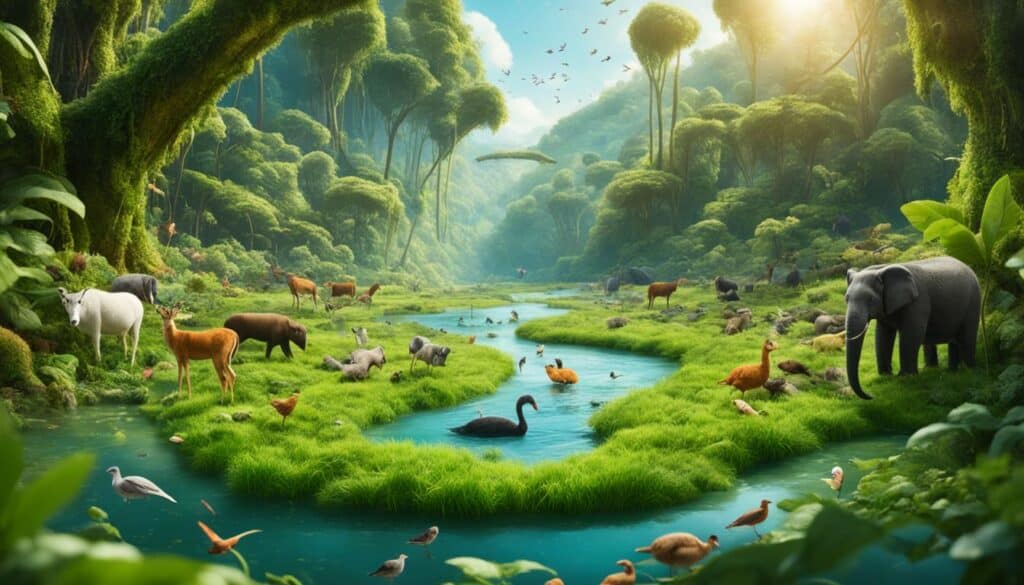
Reduction in Microplastics Proliferation
One of the most significant environmental wins of transitioning to biodegradable straws is curtailing the proliferation of harmful microplastics. These are tiny particles of plastic debris, often a result of the breakdown of larger plastic items, that find their way into terrestrial and aquatic ecosystems. Their minute size makes them easy to ingest by various organisms, thereby infiltrating our food chains. Switching to compostable drinking straws essentially ensures that our sipping solutions do not add to this burgeoning issue.
Protecting Marine Life from Plastic Pollution
Marine life is at particular risk from plastic pollution, with millions of sea creatures killed or injured every year due to ingestion of or entanglement in plastic debris. The ability of biodegradable straws to decompose naturally in a relatively short span offers a significant advantage here. As these straws break down, they are less likely to contribute to the plastic waste that endangers marine life, thereby playing a critical role in their protection.
Contribution to Lower Greenhouse Gas Emissions
Did you know that the production and disposal of plastic straws contribute significantly to greenhouse gas emissions? This is primarily because these straws are derived from petroleum, a fossil fuel. On the contrary, compostable straws are made from renewable, plant-based resources like cornstarch, wheat, or sugarcane that sequester carbon dioxide during their life cycle.
Moreover, the manufacturing process of biodegradable straws releases much fewer greenhouse gases as compared to their plastic counterparts. This way, by opting for compostable straws, we contribute to a lower carbon footprint that is much gentler on our planet.
The Science Behind Biodegradable Straws: How They Break Down Naturally
Modern technology has taken us far beyond the realm of simple sustainability, where we merely coexist with nature, to an era where we harness the power of nature to protect the environment. A prime example of this new-age technology is biodegradable straws.
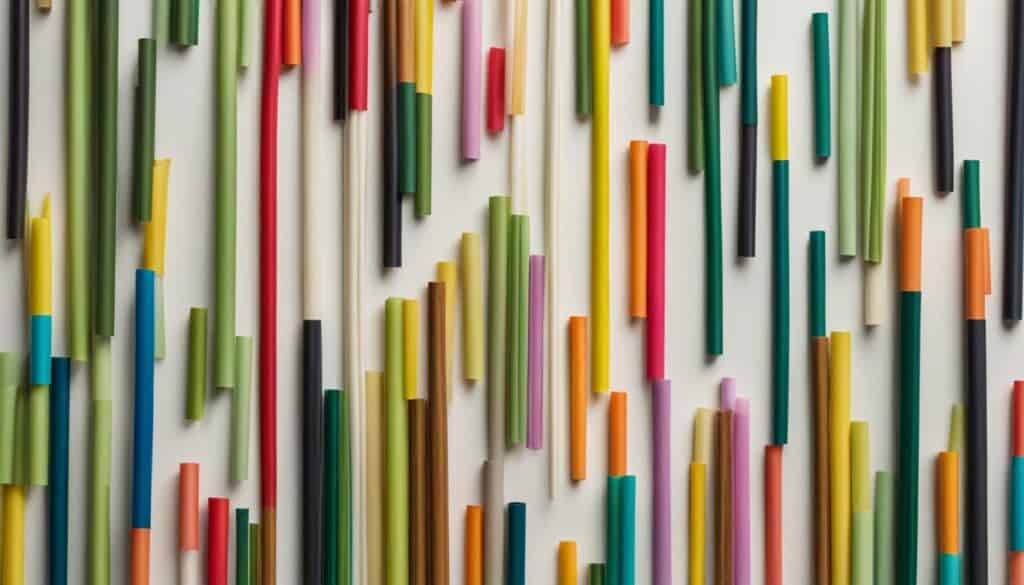
Unlike traditional plastic straws, which pose a significant environmental threat due to their inability to decompose naturally, biodegradable straws are designed to break down naturally in a relatively short period. These compostable straws are aligned with environmental science principles to ensure minimal impact on the planet.
Materials Utilized in Producing Biodegradable Straws
The journey of a biodegradable straw begins with the careful selection of raw materials. Unlike plastic straws which derive from petrochemicals, these straws are often made from renewable resources like rice, sugarcane, and grass. This choice of biodegradable straw materials ensures that the straws breakdown naturally.
| Material | Source | Biodegradation Time |
|---|---|---|
| Rice | Rice plant | 90 days |
| Sugarcane | Sugarcane plant | 45-60 days |
| Grass | Grass plant | 30-45 days |
The Composting Process and Its Role in Decomposition
The process of breaking down these compostable straws is naturally facilitated by the composting process. Composting is a biological process that breaks down organic materials into a nutrient-rich soil additive in the presence of oxygen, water, and sunlight.
This nutrient-rich additive provides an optimum setting for these straws to break down into base elements, contributing to a healthier soil ecosystem. The composting process promotes the natural breakdown and recycling of materials, empowering consumers to contribute to a healthier planet directly.
The science behind biodegradable straws is therefore a testimony to our ability to coexist and even thrive with nature.
It’s an effective example of co-opting the wisdom of nature to uphold the principles of sustainability and environmental stewardship. As such, embracing products like compostable straws takes us a step further in our journey toward creating a cleaner and greener planet.
Biodegradable Straws vs. Plastic: A Comparative Analysis
Choosing a drinking straw may seem like an insignificant decision, but it carries significant environmental implications. The environmental comparison between biodegradable and plastic straws is quite stark, revealing the extensive environmental footprint left by our everyday choices. Let’s delve into an analysis that demonstrates how sustainable drinking straw alternatives can help alleviate environmental degradation.
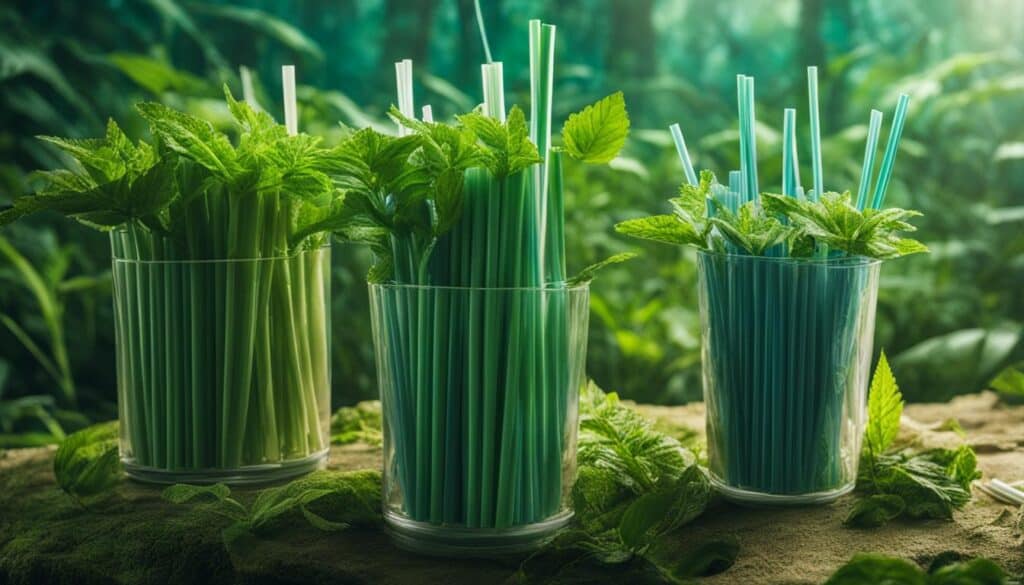
The widely used, quintessential drinking accessory poses a serious environmental challenge. Despite their convenience, they have a lifespan that stretches far beyond their use, lingering in our ecosystems for centuries.
| Plastic Straws | Non-biodegradable | Long-lasting environmental impact | Contributes to plastic pollution |
|---|
On the other hand, biodegradable straws offer an eco-responsible choice. They decompose naturally, blend back into the earth, and do not contribute to plastic pollution.
| Biodegradable Straws | Fully compostable | Minimal environmental impact | Helps reduce plastic pollution |
|---|
“It’s not just about replacing one straw with another. It’s about rethinking our entire approach to single-use plastic and choosing sustainable alternatives that do not harm our planet.”
- Eco-friendly alternatives like biodegradable straws can significantly decrease our reliance on plastic, thereby mitigating its adverse effects.
- Investing in sustainable practices can pave the way for a greener, healthier planet.
In conclusion, when it comes to the battle of biodegradable vs. plastic straws, the winner is clear. Biodegradable straws offer a more sustainable, eco-friendly alternative, aligning well with our collective quest for a greener and healthier planet.
Adopting Biodegradable Straws: Pros and Cons for Consumers and Businesses
In today’s global quest toward environmental responsibility, biodegradable straws have emerged as a significant player. Their adoption by consumers and businesses alike not only underscores an effective resolution to plastic pollution but also signals a broader shift towards sustainable living and responsible business practices. Nevertheless, the transition involves weighing its various benefits and potential drawbacks.
Health Implications
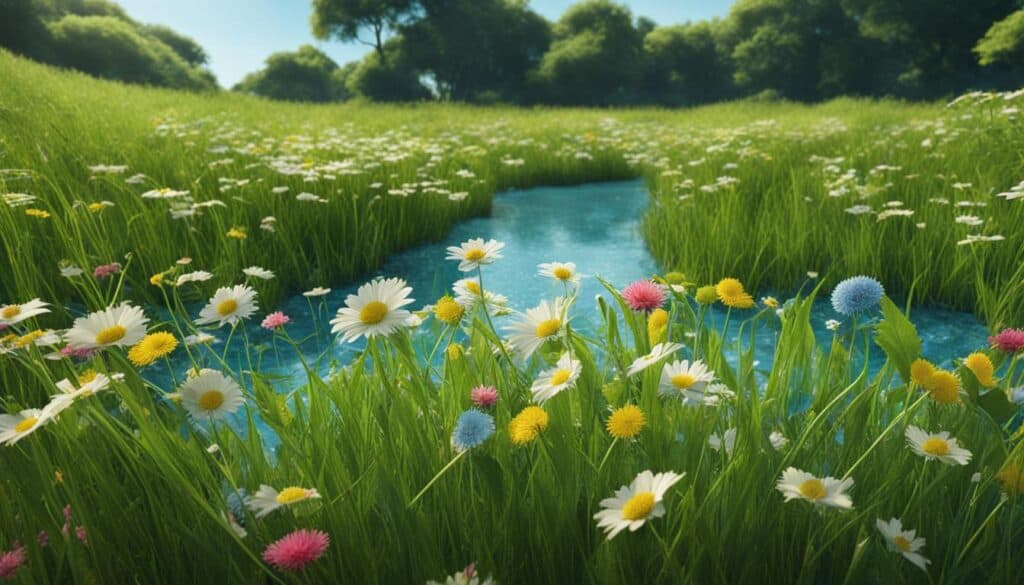
From a health standpoint, the benefits of biodegradable straws are substantial. Unlike traditional plastic straws, biodegradable alternatives are free of harmful chemicals like BPA, thereby offering safer drinkware for consumers. Their natural composition makes them an attractive choice for those seeking to reduce their exposure to harmful substances in everyday use items.
Cost Considerations and Accessibility
Despite the health benefits, biodegradable straws may pose a financial hurdle for some. They are typically priced higher than their plastic counterparts, which can deter budget-conscious consumers and businesses. Nonetheless, it is essential to consider their cost-effectiveness in the long run. By averting potential clean-up costs and environmental damage associated with plastic waste, the higher initial cost may prove to be a worthwhile investment.
Sustainable Branding Opportunities
Eco-conscious branding has become a significant part of consumer preferences and market trends. Businesses that implement sustainable practices, such as using biodegradable straws, are viewed favorably by consumers. This alignment with current consumer preferences provides businesses the opportunity to enhance their brand image while contributing positively towards environmental sustainability. In this age of ecological awareness, such measures could drive more significant customer loyalty and potentially increased profit margins.
| Factor | Biodegradable Straws | Plastic Straws |
|---|---|---|
| Health Implications | Free of harmful chemicals | Could contain harmful chemicals like BPA |
| Cost | Higher initial cost, but long-term savings on environmental cleanup | Lower initial cost, but long-term environmental damage and cleanup costs |
| Branding Opportunities | Boosts brand image and customer loyalty | Could potentially damage brand image in the long run |
| Long-term Business Sustainability | Aligns with trends toward sustainable practices | Out of step with growing preference for eco-friendly options |
Lifecycle of a Biodegradable Straw: From Production to Disposal
Understanding the biodegradable straw lifecycle aids in illuminating the sustainable triumph encapsulated in each eco-friendly sipping apparatus. Adopting a far-reaching view, we can imagine the life of a biodegradable straw as a compelling narrative of green revolution, starting from conscientious production processes to final disposal and decomposition.
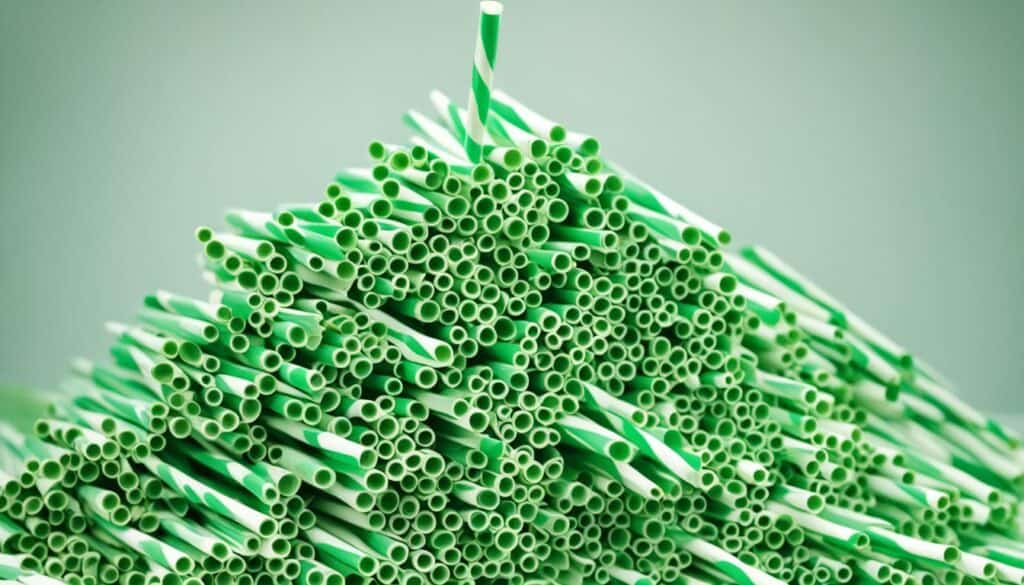
The journey encapsulates a sustainable chronicle that primarily revolves around renewing what the Earth has endowed us with. Imagine it this way, the cycle commences when resources, such as cornstarch, wheat, and sugarcane, are harnessed to create the straws – no plastic, no harmful chemicals, just pure organic materials.
During its life, the straw ventures through delightful beverages, making your cocktail parties and picnics a tad bit greener. The spotlight, however, shines brighter at the time of its disposal and decomposition. Shunning the traditional destiny of ending up in overflowing landfills and choking marine inhabitants, it retires into the humble compost bin.
The completion of the biodegradable straw lifecycle reverberates throughout an environmental lifecycle analysis. Herein lies the primary distinction between the fates of a biodegradable straw and its plastic counterpart: one replenishes the Earth’s soil, while the other continues to exacerbate the Earth’s pollution crisis.
Picturing this nearly perfect circle – from nature back to nature – underscores the sustainable potential in our lifestyles and choices. In every biodegradable straw swished in a refreshing beverage lies a tale of environmental promise, one sip at a time.
Top 7 Types of Biodegradable Straws: Eco-Friendly Alternatives
As we navigate the shift towards more sustainable practices, one significant change we can all make is replacing our traditional plastic straws with biodegradable alternatives. I am amazed to see the sheer variety of biodegradable straws available in today’s market, each offering a blend of unique properties to cater to different user preferences. These eco-friendly alternatives not only serve their functional purpose but also do their bit in preserving our planet. Let’s delve into three such types that have caught my attention.
Grass Straws: An Innovative and Durable Option
Grass straws are making waves due their incredible durability and the unique, natural aroma they lend to your beverages. These straws, made from real grass, have certainly become one of my preferred eco-friendly drinking options. They offer the dual advantage of being both commercially viable and sustainably produced to minimize any harmful impact on our environment.
Rice & Tapioca Straws: Edible and Versatile
Next on my list are rice and tapioca straws. Edible and versatile, these straws come in appealing pastel colors making them an absolute delight to use. Their appeal lies not only in their aesthetic beauty but also in their practicality. You can easily dispose of them after use, knowing they will naturally decompose without leaving any harmful residue behind.
Sugarcane Straws: Toughness Meets Compostability
Last, but certainly not least, are sugarcane straws. If you’re looking for robustness paired with compostability, then sugarcane straws are the right choice for you. Produced from the by-products of sugar production, I find them to be high-performance, environmentally responsible alternatives to traditional plastic straws. Their sturdiness doesn’t compromise on their ability to disintegrate swiftly without causing any adverse effects on the environment.
In conclusion, grass, rice, and tapioca, and sugarcane straws are just a few examples of the wide array of biodegradable straw alternatives we have today. So, the next time you decide to sip on your favorite drink, make the wise and eco-responsible choice. Opt for a biodegradable straw and let’s contribute, one straw at a time, towards a healthier and cleaner planet.
FAQ on Biodegradable Straws and Environmental Benefits
Q: Why should I consider replacing single-use plastic straws with a more eco-friendly straw?
A: Replacing single-use plastic straws with an eco-friendly straw such as biodegradable straws is a sustainable alternative to plastic straws. Biodegradable straws are made from materials that do not harm the environment and after use, don’t end up in landfills. Therefore, switching to biodegradable straws is environmentally friendly and better for the environment.
Q: In what way does using biodegradable straws help reduce the impact on the environment?
A: Using biodegradable straws can help reduce the amount of plastic waste that ends up in our environment. Unlike plastic ones, biodegradable straws do not release any harmful substances when discarded and can safely decompose, significantly reducing their environmental impact.
Q: What are some of the alternatives to single-use plastic straws?
A: There are many alternatives to single-use plastic straws, including paper straws, bamboo straws, and metal straws. These alternatives are all better for the environment and are becoming increasingly popular as people become more aware of the environmental impact of plastic waste.
Q: Why are paper straws a good alternative to plastic straws?
A: Paper straws are a good alternative to plastic straws because they are biodegradable and do not harm the environment. Like other biodegradable straws, they can degrade naturally without releasing harmful substances. Using eco-friendly paper straws can help reduce the amount of plastic waste that ends up in our landfills and oceans.
Q: How do biodegradable straws help reduce single use plastic waste?
A: Biodegradable straws can help reduce single-use plastic waste by providing a sustainable and environmentally friendly alternative. Unlike the conventional type of plastic straws, these straws are made from materials that decompose naturally over time, thus reducing the waste that ends up in our environment.
Q: When I choose to use biodegradable straws, what environmental benefits am I contributing to?
A: By choosing to use biodegradable straws, you are contributing to several environmental benefits. You help reduce the amount of single-use plastic that could potentially harm wildlife and ecosystems, decrease landfill waste, and ultimately conserve natural resources. It’s a small yet meaningful way to care for our planet.
Q: Where can I get biodegradable straws?
A: Biodegradable straws are becoming increasingly popular, thus they can be found in various places. You can purchase them online, at local supermarkets, or eco-friendly stores. Some cafes and restaurants also offer them as an alternative to plastic straws.
Q: What material are biodegradable straws usually made of?
A: Biodegradable straws are made from a variety of materials such as paper, bamboo, and even some types of metal. These materials are chosen because of their ability to decompose naturally, thus not causing harm to the environment.
Q: Can I use biodegradable straws for hot drinks?
A: Yes, you can use biodegradable straws for hot drinks. However, it’s best to check the manufacturer’s recommendations as some types of biodegradable straws, like paper straws, may become soggy quicker than others. There are plenty of alternatives specifically designed to withstand hot temperatures, like bamboo or metal straws.
Q: Do biodegradable straws taste different than plastic ones?
A: Most people find that there is little to no taste difference when using biodegradable straws compared to plastic ones. Some biodegradable straws like paper might have a slightly different feel, but they do not generally affect the taste of the drink. Bamboo straws and metal straws are almost completely tasteless.

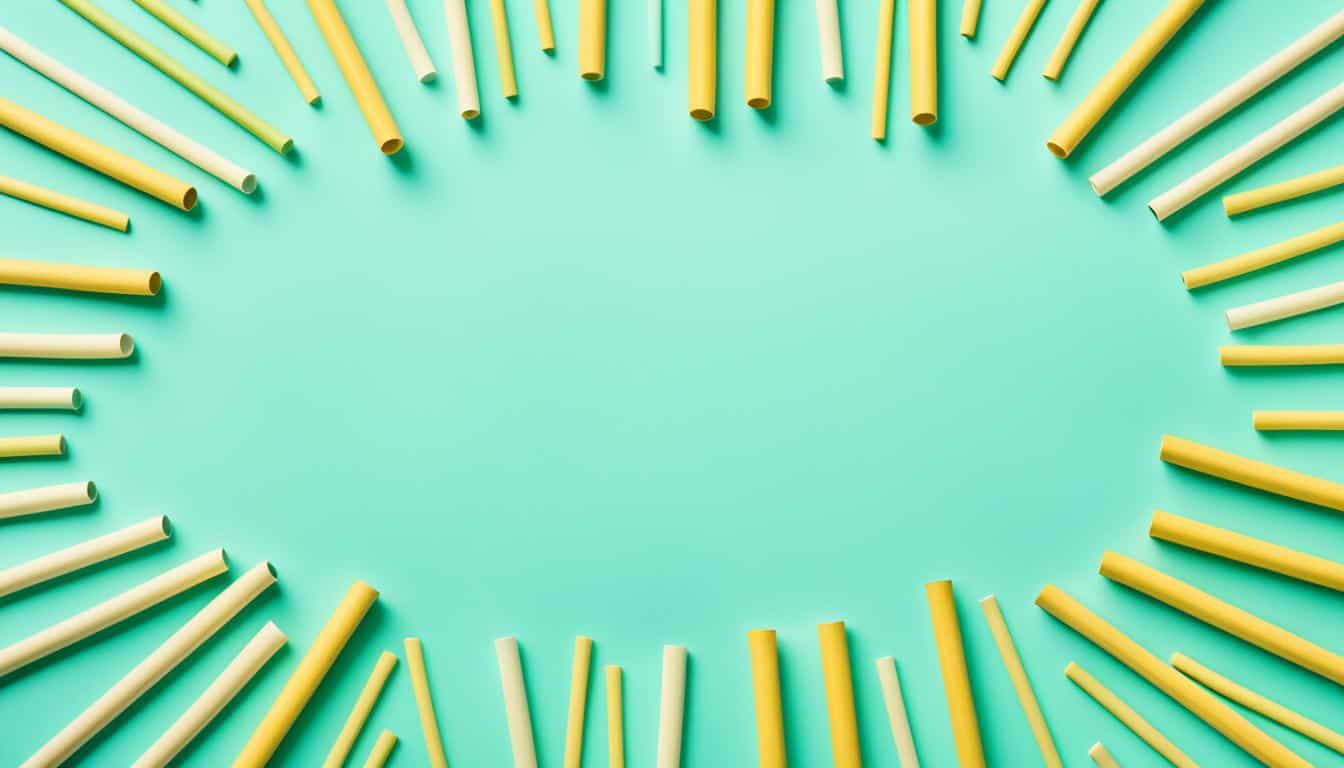



Leave a Reply